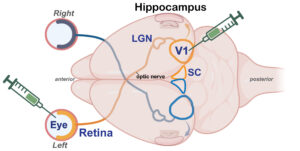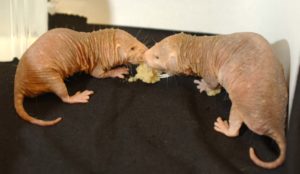Research
We investigate early mechanisms of Alzheimer’s disease/dementia.
Our projects are organized by two overarching objectives: 1) To identify mechanisms by which systemic disruptions in homeostasis promote brain vulnerability to dementia pathogenesis, and 2) To understand the interface between early visual deficits and dementia neuropathology.
These research objectives are linked by a unifying goal to discover how mechanisms responsible for disrupting the most basic functions of the brain may also drive elaborate disease processes that destroy the brain’s most advanced cognitive capabilities. Here are summaries of our major projects:
Integrin dysfunction in tauopathy
We are studying factors that contribute to neurofibrillary tau pathogenesis (i.e. tauopathy), a hallmark pathology of dementia that accumulates in preclinical disease stages and correlates closely with clinical progression of cognitive decline in dementia. We recently found that that the exercise-induced hormone irisin—which is known to modulate critical cell surface proteins called integrins– reduces tau pathology and inflammation in the brains of transgenic tauopathy-model htau mice in a sex and age-dependent manner. We are currently testing whether integrin function is altered by AD risk factors or susceptibility genes, and whether this causes integrins to activate inflammatory and neurodegenerative pathways that promote onset and progression of tauopathy.
Impact of Alzheimer’s pathology on visual system
We are investigating how presence of pathological Aβ or tau proteins in the retina causes damaging changes along the primary retinal pathway to primary visual cortex (V1), and whether disease mechanisms can then spread via V1’s interconnections to brain regions affecting learning and memory. To study this, we are experimentally injecting Aβ or tau and proteins into either the eyes or V1 of healthy mice and measuring the effects of this manipulation on visual system circuitry using a combination of electrophysiological and immunohistochemical techniques.
changes along the primary retinal pathway to primary visual cortex (V1), and whether disease mechanisms can then spread via V1’s interconnections to brain regions affecting learning and memory. To study this, we are experimentally injecting Aβ or tau and proteins into either the eyes or V1 of healthy mice and measuring the effects of this manipulation on visual system circuitry using a combination of electrophysiological and immunohistochemical techniques.
We are also biological resource providers of naked mole-rats for numerous research groups in the U.S. and abroad!
